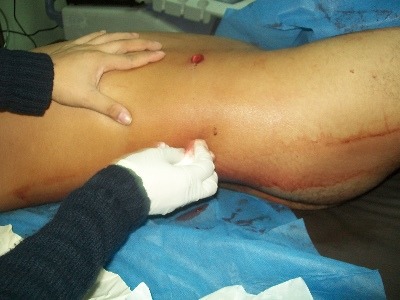Traumatic brain injury (TBI) is a common injury world-wide, but neurosurgeons are scarce. Traditionally, neurosurgeons are the ones to place invasive monitors to watch intracranial pressure (ICP). But what about injured people who are taken to a hospital where there is no available neurosurgeon?
A group at Wichita, Kansas looked at their 10 year experience with ICP monitor placement, where it can be done by neurosurgeons, trauma surgeons or general surgical residents (under trauma surgeon supervision). A total of 63 were placed by neurosurgeons, 30 by trauma surgeons, and 464 by residents under supervision. The usual demographics, including hospital stay, were the same across groups. There were essentially no significant differences based on who placed the monitor. Curiously, the article does not state whether the monitors were extradural or intraventricular, or both. The discussion section alludes to the fact that they were “parencyhmal.”
There were only three iatrogenic bleeds, and all occurred with resident placed monitors. None were clinically significant. Malfunction rate was about 5% across all groups. Monitors had to be replaced at some point in about 11% of all three groups. One CNS infection occurred in a patient with a resident-placed monitor.
Bottom line: With proper training and supervision, ICP monitors can be placed by just about anyone. This is particularly important in more rural locations where there are few if any neurosurgeons. But as always, this process needs to be monitored carefully by the hospital’s Trauma Performance Improvement / Patient Safety program (PIPS).
Related posts:
Reference: Placement of intracranial pressure monitors by non-neurosurgeons: excellent outcomes can be achieved. J Trauma 73(3):558-563, 2012.


